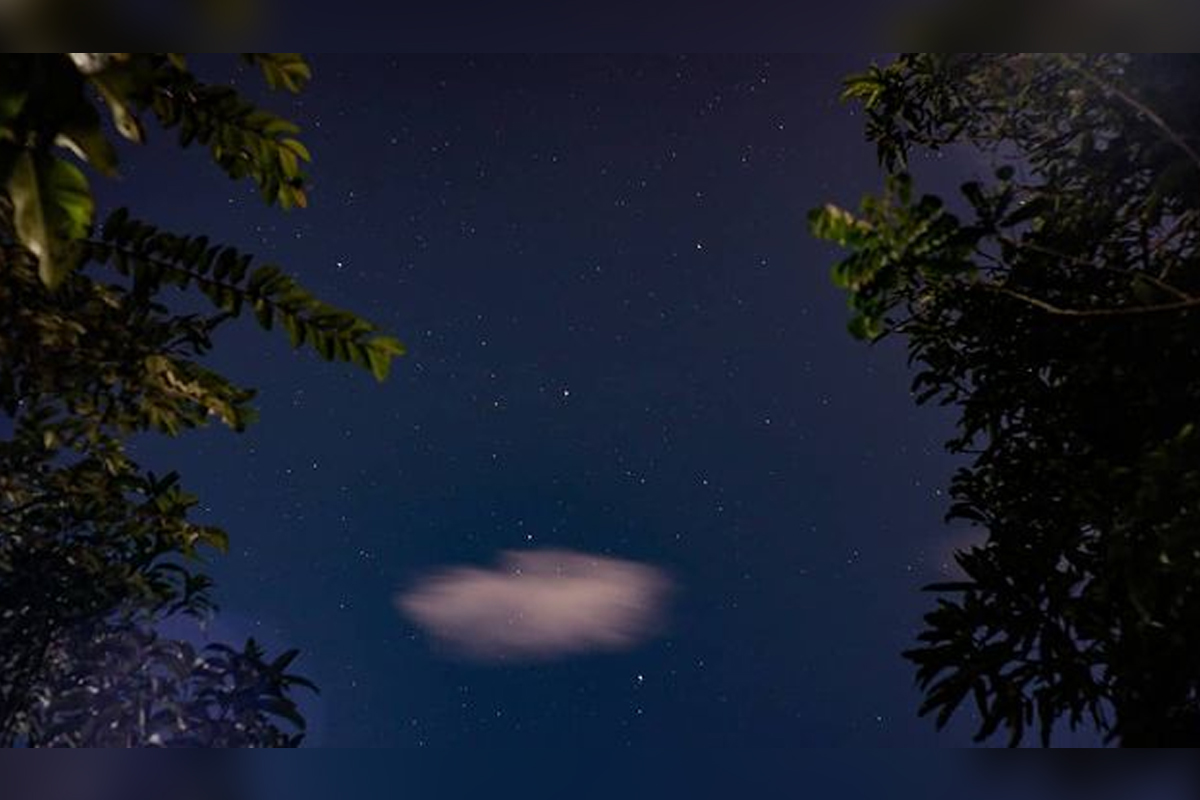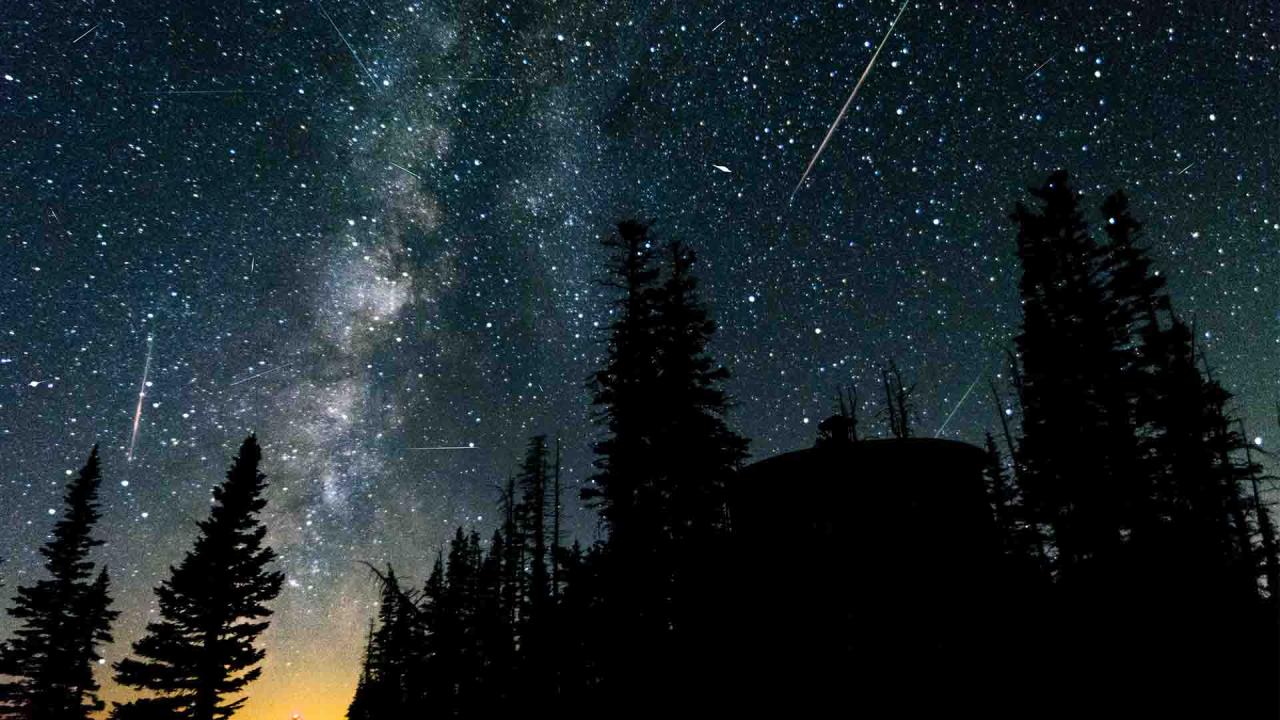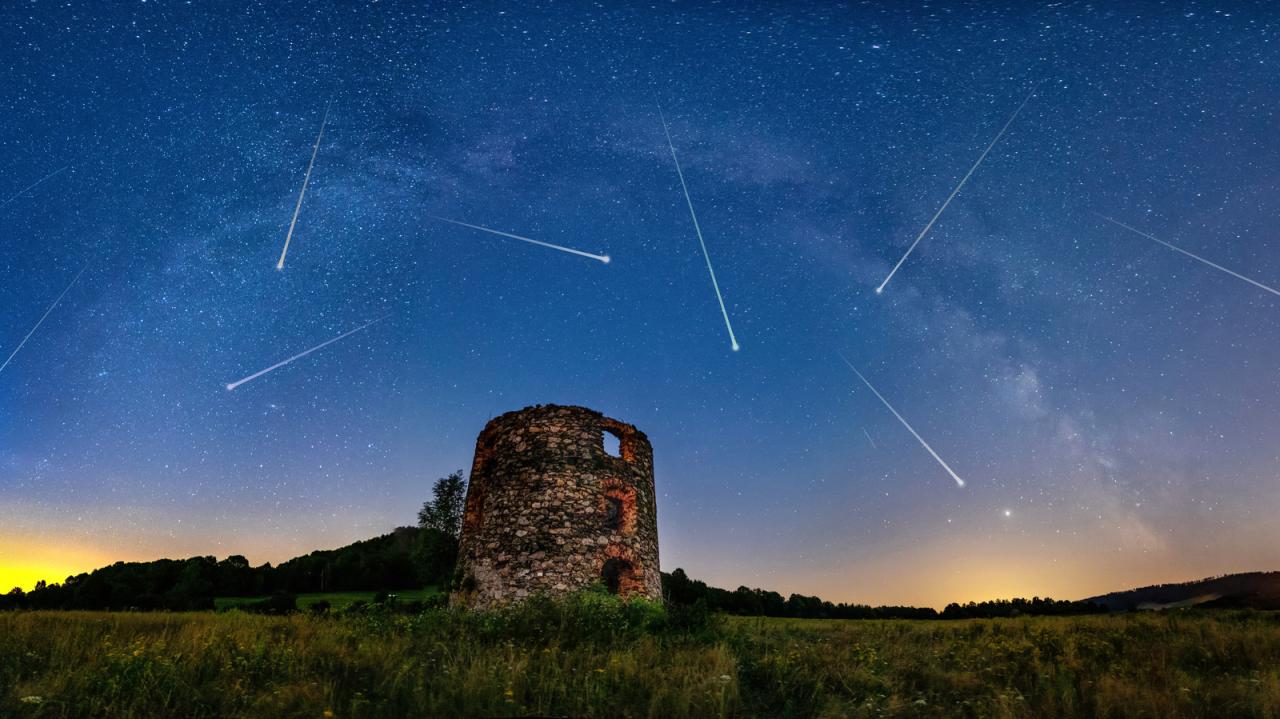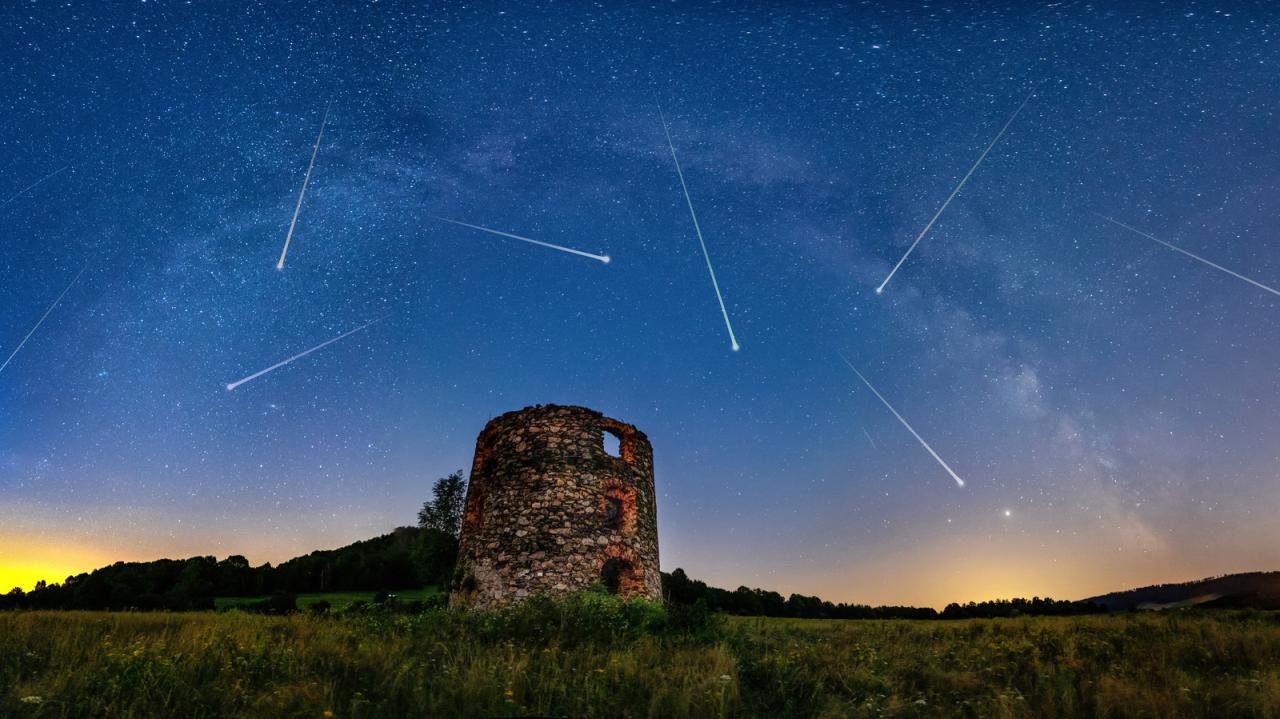Quadrantid meteor shower to light up skies – here’s the best way to witness this celestial spectacle! Get ready for a dazzling display as the Quadrantids, known for their bright and fast meteors, peak. This guide will equip you with everything you need to find the perfect viewing spot, understand the shower’s origins, and capture stunning photos. We’ll cover optimal viewing times, essential equipment, safety tips, and even backup plans for cloudy nights.
Let’s make this year’s Quadrantids unforgettable!
This year’s Quadrantid meteor shower promises a breathtaking show. Understanding when and where to look, along with a few essential preparations, will significantly enhance your viewing experience. We’ll break down the key factors impacting visibility, such as light pollution and moon phase, and offer practical advice for capturing the magic with your camera. Whether you’re a seasoned stargazer or a curious newcomer, this guide is your passport to an incredible night under the stars.
Want to catch the Quadrantid meteor shower? Find a dark spot away from city lights for optimal viewing. While you’re waiting, check out this amazing cricket match recap: Rickelton double-century, Verreynne fifty propel SA to 429 by , it’s a real nail-biter! Then, get back to stargazing – remember to bundle up warm, it’s going to be a chilly night!
Peak Viewing Times and Locations
The Quadrantid meteor shower’s peak viewing time varies depending on your location due to time zone differences. Optimal viewing conditions are also influenced by factors like light pollution and the moon phase. Finding a dark location away from city lights is crucial for maximizing your viewing experience.
Want to catch the Quadrantid meteor shower? Find a dark spot away from city lights for the best viewing. While you’re bundled up, maybe check out the latest Canucks news – Canucks recall Arturs Silovs, Thatcher Demko remains out vs – before heading outside. Then, get comfy, look up, and enjoy the celestial show! Remember to dress warmly!
Optimal Viewing Times and Locations by Time Zone
| Time Zone | Peak Viewing Time (Approximate) | Ideal Viewing Location (General Region) | Moon Phase Influence |
|---|---|---|---|
| UTC | Around 04:00 – 06:00 | Rural areas with dark skies, away from major cities | Check the moon phase for your specific location and date; a new moon or crescent moon is ideal. |
| EST (Eastern Standard Time) | Around 23:00 – 01:00 | Dark sky areas in the eastern United States, such as national parks or remote areas | Minimal influence if a new moon, more significant if a full moon. |
| PST (Pacific Standard Time) | Around 20:00 – 22:00 | Dark sky areas in the western United States, away from major cities | The moon’s phase will impact visibility similarly to EST. |
| GMT (Greenwich Mean Time) | Around 04:00 – 06:00 | Areas in Europe with minimal light pollution, such as rural areas or mountainous regions. | Similar to UTC, a new moon is best. |
A map illustrating areas with minimal light pollution can be found on various light pollution mapping websites. These websites use satellite data to show areas with low light pollution, making them ideal for meteor shower viewing. Weather conditions are another crucial factor; clear skies are essential for optimal visibility.
Understanding the Quadrantids: Quadrantid Meteor Shower To Light Up Skies – Here’s The Best Way To

The Quadrantid meteor shower is known for its high peak rates and bright meteors. Understanding its origin and characteristics enhances the viewing experience.
Origin and Characteristics of the Quadrantids
The Quadrantids originate from the debris trail of an extinct comet or possibly an asteroid, 2003 EH1. These particles enter Earth’s atmosphere at high speeds, resulting in bright and often colorful meteors. The radiant point, the apparent origin of the meteors, is located in the constellation Boötes, near the former constellation Quadrans Muralis, from which the shower derives its name.
This radiant point appears to move across the sky due to Earth’s rotation.
Composition and Speed of Quadrantid Meteoroids

The meteoroids are primarily composed of rocky material and dust particles. They enter Earth’s atmosphere at speeds of approximately 41 kilometers per second (about 92,000 mph), which contributes to their brightness and often long trails.
Differences Between Quadrantids and Other Prominent Meteor Showers
- Peak Duration: The Quadrantids have a relatively short peak, lasting only a few hours compared to other showers which can last for several days.
- Radiant Point: Their radiant point is unique and located in a less commonly known constellation.
- Meteor Characteristics: Quadrantids are known for their bright and sometimes colorful meteors, often leaving persistent trails.
- Origin: Their origin is less clearly understood compared to other meteor showers associated with well-known comets.
Essential Equipment and Preparation
Proper preparation is key to a successful meteor shower viewing experience. This includes gathering the necessary equipment and finding a suitable location.
Necessary Equipment and Location Tips
For comfortable and successful viewing, bring a blanket or reclining chair, warm clothing (layers are recommended!), a thermos of hot drinks, and a red-light flashlight (to preserve night vision). Finding a dark location away from city lights is crucial. Use light pollution maps to locate ideal spots.
Dark Adaptation and Viewing Checklist
Allow at least 20-30 minutes for your eyes to adjust to the darkness. This significantly improves your ability to see fainter meteors. Avoid looking at bright lights during this time.
- Items to Bring: Blanket/chair, warm clothing, red-light flashlight, snacks, drinks, compass (optional).
- Steps Before Observation: Find a dark location, allow your eyes to adjust, get comfortable, and be patient.
Photography Tips for Capturing the Shower
Capturing the Quadrantids on camera requires specific techniques to ensure you get stunning shots of the celestial event.
Camera Settings and Techniques
Use a DSLR or mirrorless camera with a wide-angle lens (around 14-35mm). Set your aperture to the widest possible setting (low f-number, like f/2.8 or f/4), a high ISO (e.g., 1600-3200), and a long shutter speed (e.g., 15-30 seconds). A tripod and remote shutter release are essential to avoid camera shake. Compose your shots to include the surrounding landscape for context.
Post-Processing Tips, Quadrantid meteor shower to light up skies – here’s the best way to
Post-processing can enhance the visibility of meteors in your photographs. Software like Adobe Lightroom or Photoshop allows adjustments to brightness, contrast, and noise reduction to highlight the meteors against the night sky.
Safety Precautions During Observation
Night-time viewing presents potential safety hazards that need to be addressed. Prioritizing safety ensures a worry-free experience.
Safety Guidelines and Measures
- Cold Weather: Dress warmly in layers, wear gloves, hats, and scarves.
- Uneven Terrain: Use a flashlight (red light is best) and wear sturdy footwear to avoid tripping.
- Dark Locations: Be aware of your surroundings and avoid isolated areas.
- Light Sources: Minimize the use of bright lights to preserve night vision and avoid disturbing others.
Alternative Viewing Options for Cloudy Skies
Cloud cover can obstruct viewing. Fortunately, there are alternative ways to experience the meteor shower.
Online Resources and Virtual Events

Many astronomy websites and organizations offer live streams of meteor showers. Check for online events or virtual viewing parties. Websites and apps that provide weather forecasts and light pollution maps can help determine the best viewing conditions and locations.
Illustrative Descriptions of the Celestial Event

Witnessing the Quadrantids is a breathtaking experience. The visual spectacle and overall impact are unforgettable.
Visual Experience and Impact
The Quadrantids are known for their bright, swift meteors streaking across the sky. You might see several meteors per minute during the peak. Their trails can vary in color, ranging from white and yellow to green and blue. The overall experience is one of awe and wonder, a reminder of the vastness and beauty of the universe.
Seeing a particularly bright meteor, a fireball, is a truly spectacular sight—a sudden, intensely bright flash that illuminates the night sky for a brief moment, leaving a lingering trail that slowly fades.
Final Wrap-Up
So, grab your warmest clothes, check the weather forecast, and prepare for an awe-inspiring celestial event! Remember, the key to a successful Quadrantid viewing is planning ahead and embracing the experience. From finding a dark location away from city lights to allowing your eyes to adjust, each step contributes to an unforgettable night under the stars. Don’t forget your camera – you might just capture the meteor of a lifetime! Happy viewing!
Want to catch the awesome Quadrantid meteor shower? Find a dark spot away from city lights for the best viewing! If you’re looking for a career with a similar level of precision, check out surgical tech programs near me – it’s all about timing and accuracy. Then, bundle up, grab a comfy chair, and enjoy the celestial show! Remember to look up and enjoy the shower.
Question Bank
What causes the Quadrantid meteor shower?
The Quadrantids are caused by debris from an extinct comet, 2003 EH1.
How many meteors can I expect to see per hour?
Under ideal conditions, you might see up to 120 meteors per hour at the peak.
Is special equipment necessary to view the shower?
No, you don’t need a telescope. Your eyes are all you need!
What if it’s cloudy on the peak night?
Check for online live streams or look for viewing opportunities a night or two before or after the peak.
